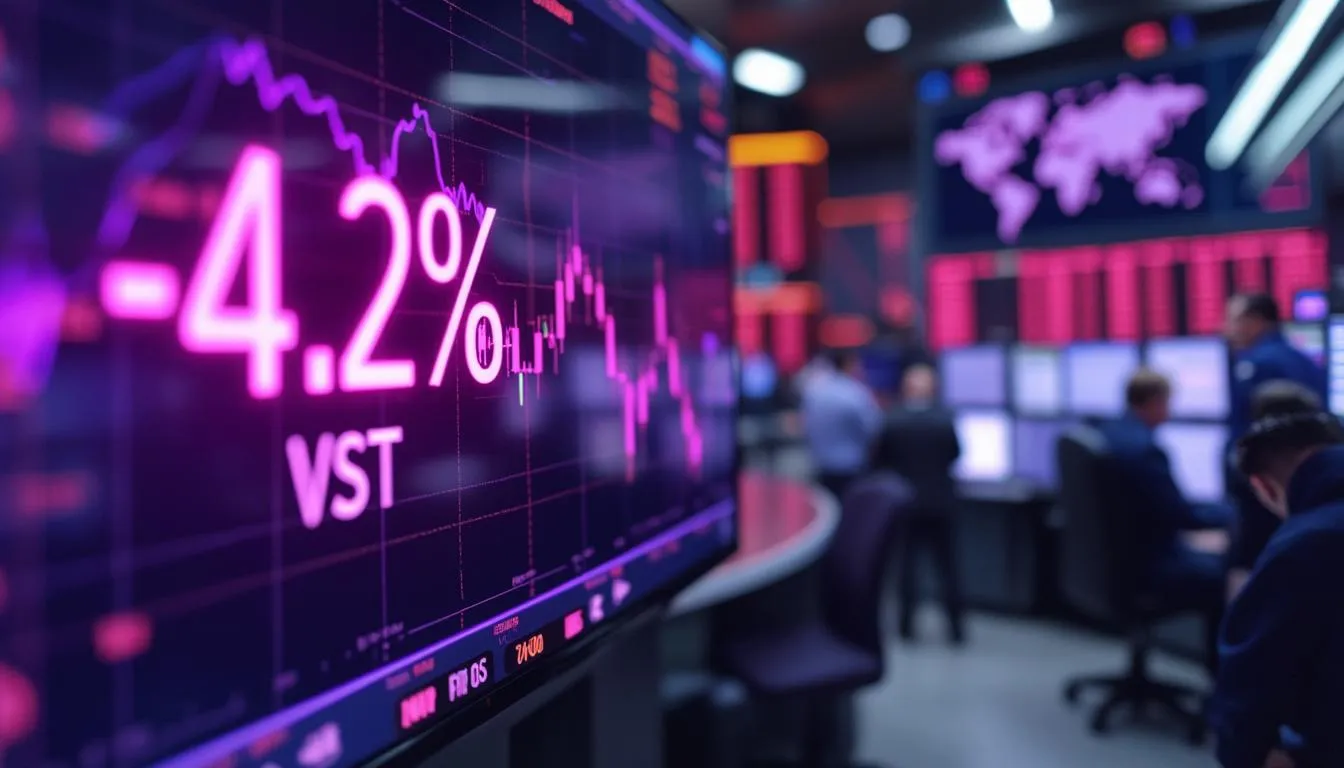A Defensive Giant in Retreat: Why Eli Lilly Stands Out in Today’s Market
Eli Lilly & Co. (LLY), a crown jewel of the pharmaceutical industry and a long-standing leader in the S&P 500’s healthcare sector, finds itself at the forefront of investor attention today — but for unexpected reasons. With shares down nearly 4% in late trading, Lilly’s decline starkly contrasts its meteoric multi-year run, during which it outpaced both peers and the broader market. This article unpacks the latest session’s sharp drop, probes headline catalysts, and frames the move in the context of recent momentum and sector-wide developments.
Key Takeaways
LLY down 3.97% late in the session, trading near $766.44 on above-average volume (3.13M shares vs. typical averages).
Sharp divergence from the stock’s long-term outperformance (+635% since 2020), highlighting today’s move as a sector outlier.
Recent news focuses on valuation, analyst recalibrations, and market sentiment rather than fundamental business deterioration.
Dividend growth and pipeline remain long-term positives, but short-term sentiment is challenged by broader defensive sector rotation.
LLY’s Roll as a Market Bellwether
Since the COVID-19 pandemic, Eli Lilly has become synonymous with large-cap healthcare success, propelled by blockbuster drugs like Mounjaro (for diabetes/weight loss) and a robust pipeline of novel therapies. Its ascendancy has been marked by repeated all-time highs, a swelling market capitalization, and frequent inclusion in ‘must-own’ lists for both growth and defensive investors. As 24/7 Wall Street recently noted:
“From late 2020 to the summer of 2024, Eli Lilly & Co. stock was on a tear, up more than 635%.”
— 24/7 Wall Street, July 2025
With this context, today’s nearly 4% drop is more than a blip — it’s a rare display of weakness for a stock that has often defied gravity even as sector sentiment rotated between risk-on and risk-off.
LLY’s Price and Volume in Focus
Metric | Value |
|---|---|
Current Price | $766.44 |
Change (%) | -3.97% |
Previous Close | $799.34 |
Volume (Shares) | 3,131,569 |
This session’s selloff is notable both for its magnitude and timing: it arrives as the broader market itself is under moderate pressure, but the move in LLY is outsized compared to major indices. Volume well above daily averages suggests institutional repositioning, potentially in response to shifting analyst outlooks or sector flows.
Anatomy of the Pullback: Valuation, Rotation, and Sentiment
Lofty Expectations Meet Sector Rotation
LLY’s valuation has been a topic of heated debate. Trading at premium multiples versus both its pharma peers and the market at large, the stock has been priced for perfection. The latest news cycle, however, is less about business deterioration and more about recalibration:
Forecast Cautions: Analysts and outlets like Zacks Investment Research have flagged the need to “be aware of the facts that can impact the stock’s prospects,” as Zacks notes, pointing to high expectations and the risk of disappointment if growth or pipeline news underwhelms.
Sector Rotation: Broader market flows are tilting away from defensives, including mega-cap pharma, as investors chase cyclicals and tech. When a defensive leader like Lilly stumbles, it can signal a deeper shift in risk appetite.
No Major Negative Surprises — Just a Pause?
Importantly, there’s no evidence of a fundamental setback, such as drug trial failures or regulatory headwinds, behind today’s drop. Instead, the move appears to be driven by profit-taking and rebalancing as investors weigh valuations against the potential for future upside. The Motley Fool’s recent feature on "dividend growth stocks to buy and hold" still includes Lilly, underlining that its core appeal remains intact despite short-term volatility.
Performance Overview: From Relentless Ascent to Sudden Descent
Multi-Year Outperformance
Stock up 635% from late 2020 to mid-2024
Outpaced both the S&P 500 and healthcare sector ETFs over nearly every rolling period
Most major drawdowns in recent years have been shallow and short-lived
Today’s Move in Context
Today’s nearly 4% decline is among the largest single-day drops for Lilly in the past year — but context matters. The stock remains up dramatically on a multi-year basis, and even after today’s drop, it’s still holding above key technical supports established in prior months.
Analyst and Market Sentiment: Recalibration, Not Capitulation
No major downgrades have been reported in the last 24 hours, but several analysts are urging caution on valuation and the pace of future gains.
Price targets remain robust, with most Wall Street firms maintaining bullish to neutral stances. However, language has shifted to emphasize ‘risk of near-term consolidation.’
Investor attention is high, as evidenced by LLY’s position atop Zacks’ most-searched stocks and widespread media coverage.
Market Context: Defensive Rotation and Healthcare Sector Crosscurrents
The broader healthcare sector is experiencing a modest pullback amid renewed enthusiasm for higher-beta growth stocks and cyclical sectors. Lilly’s decline is emblematic of this trend, as investors question whether the defensive outperformance seen in recent years is sustainable without fresh catalysts.
“Lilly (LLY) has received quite a bit of attention from Zacks.com users lately. Therefore, it is wise to be aware of the facts that can impact the stock’s prospects.”
— Zacks Investment Research, July 2025
Conclusion: What Today’s LLY Drop Means for Investors
Eli Lilly’s sudden pullback is a powerful reminder that even market darlings are not immune to sector rotations and sentiment shifts. For investors, today’s decline is less about business deterioration and more about technical digestion after a historic run. Long-term bulls may view the move as a healthy reset, while short-term traders should be alert to further volatility as valuations and expectations are recalibrated. In the context of both the healthcare sector and the broader market, Lilly’s session stands out as a meaningful barometer of shifting risk appetites — and a reminder that mega-cap defensives are not one-way bets.

.svg)
.svg)
.svg)
.svg)

.svg)

.svg)
















